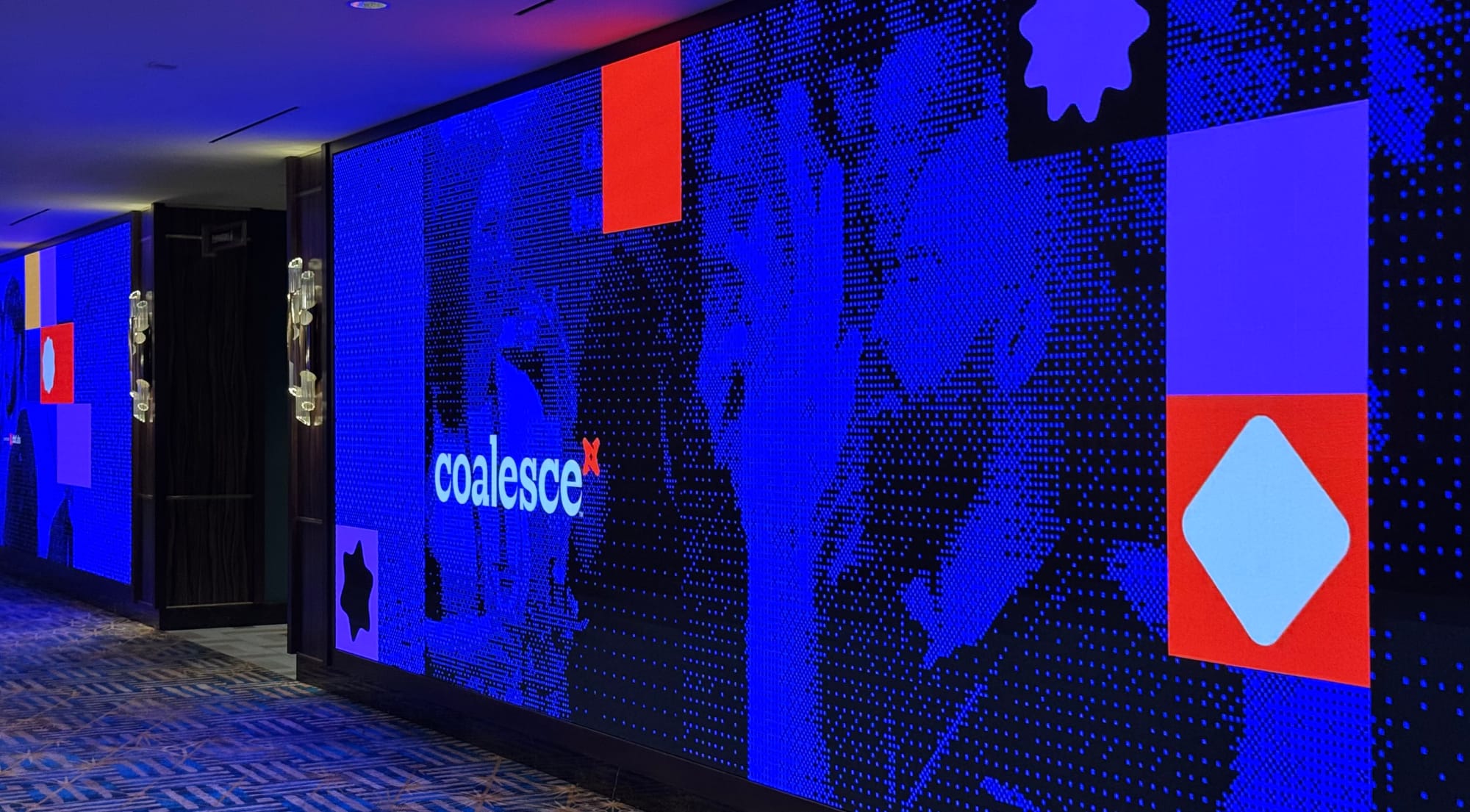Data News — dbt Coalesce 2025
Data News — dbt Coalesce 2025. What about the Fivetran + dbt Labs. What it means for data ecosystem and more.

Hey here. I hope this email finds you well. My dear Data News has been a bit neglected these past few months—I’ve been busy with my other gig (that you might nao). But don’t think I forgot you. Every Friday, I thought of you and this little corner of data passion we share.
I’ve decided the weekly write-ups are coming back—they have to. Earlier this year, I went through YC, and the aftermath took up way more of my time than I expected (especially the unplanned detour into hiring). But that’s over now. It’s time to get back to basics.
So, expect Data News to land in your inbox every week between Friday and Sunday. Same recipe as before: a bunch of links about data and AI, topped with my usual spicy opinions.
To reboot the machine this week, I’m sharing my take on dbt Coalesce and the dbt Labs + Fivetran merger that caught everyone by surprise over the past few weeks. Next week will be a “best of” edition—a curated collection of the most interesting articles from the last six months. It’s a great one, don't miss it.
A bit of history
If you were living in a cave last month, you might have missed some big news. But before jumping in, a bit of history.
I started my journey in data back in 2014, at the height of the Big Data era—when Hadoop was on everyone’s lips and companies were throwing hundreds of thousands of euros at infrastructure, teams, and software. It feels like another lifetime, when building a recommendation system was a multi-month, six-figure project
But that wasn’t even the beginning. The story starts in the late ’70s and early ’80s when the term data warehouse was coined (did you know Excel was created in 1985??). From early Oracle data warehouses to Hadoop, one pattern stayed the same: these tools were painful to use. Getting into data required obscure knowledge you couldn’t find in school, and the technology itself was… well, a bit of a nightmare (or a Java nightmare).
Then came AWS and the cloud, which simplified a lot of what we were doing. BigQuery made it even easier, just throw in your data, query it, and pay per query. In 2018, I migrated a 3 To exploding Postgres warehouse to BigQuery, cutting query times from hours to seconds. Everything ran through Airflow, orchestrating extraction and transformation. Like thousands of others, I had unknowingly built a simili-dbt.
At that time, Airflow was the glue. Every issue, every new need meant extending our internal Airflow framework — even reverse ETL was just another DAG in our dynamic DAG factory. Then, after being laid off following an acquisition, I went freelance and worked on my first dbt project. At first, I wasn’t convinced — then it clicked. It was exactly what I’d built internally, but open-source, standardised, and ready to become the industry norm. It empowered less-technical users while letting data engineers focus on keeping the platform running.
dbt also helped make SQL-first thinking mainstream. For years, it was SQL data engineers vs. JVM data engineers. The former chilling, the latter raging about our pipelines not being type-safe. Then came the “Modern Data Stack”: ingest with a paid tool (and a few custom scripts when it fails), transform with dbt on your warehouse, and visualize with two BI tools — Tableau for execs, Metabase for everyone else. We’d unbundled Airflow into a set of specialized tools.
It was a great run. But the fun had to end sometime. After a decade of building the foundations of the modern data stack, did we finally get it right? So that when AI arrived, we could just plug it in and have it magically work? Read clean metric definitions from a central warehouse and deliver a single, shared version of “revenue”?
We did nail that… right? Right?

Nobody got fired for choosing dbt
I’d say AI has arrived and it’s forcing companies to move faster than ever. This is the era of building AI apps on top of AI, not the time to pour more resources into data pipelines. That’s why we’re seeing consolidation: companies want bundled services, a single invoice, fancy certifications, and the comfort of validation from expensive tools.
All of this sets the stage for where we are now. The Modern Data Stack has become the useful idiot of the moment. Replaced by Analytics and AI Stack. Because, of course, AI runs on data, data runs on dbt.
Every year since 2020 dbt Labs is doing an annual conference called Coalesce—to not mix up with Coalesce.io (one of their Enterprise and lawsuit competitor). I've covered 2021 and 2022 Coalesce from abroad and this year I had to chance to go in-person to live the hype. Here my main takeaways:
- The merge — Fivetran and dbt Labs are merging (stocks operation) and will provide a first-of-his-kind open data infrastructure (see below). Pay attention, the merged company will do a lot of things open, because "open means opens". In their word open means open standards and not necessarily open-source.

- The vision —The follow-up of the vision of the open data infra is: all their biggest competitors are all selling storage and compute (Databricks, Snowflake, Fabric, BigQuery) but dbt Labs/Cloud/Platform is the only valid and trustworthy platform to do data because they are not vendor-locking you with a compute engine and providing you open standards on all other parts of the stack. So you can switch over something else.
- dbt Fusion — There is an economic reality, dbt acquired SDF Labs to develop Fusion. 2 mains selling points of Fusion are: cost cutting and better developer experience. I guess it's schizophrenic to sell cost cutting (~50%) while setting compute.
- Open standards — dbt Labs is rooting and supporting open standards
- Iceberg and lake — with Fivetran EL destination as datalake and dbt capabilities to support Iceberg catalog / adapter. Fivetran is a data lake company now also.
- OSI — the Open Semantic Interchange to create a unified way to define metrics with other big companies (Snowflake, Salesforce etc.) and (re)open-source MetricFlow (after taking it private after Transform acquisition)
- SQL and ADBC — dbt relies obv. heavily on this
- MCPs — because it's AI, the dbt MCP provides new capabilities to do stuff with AI.
- But what about open-source — This is our friend who stayed out of the party. They tried to do the magic trick to make us believe Fivetran is a true open-source contributor with more than 100+ open-source repos (they have 278+ but the one with the most starred has 184, even my yato thing has more).
- dbt Language — it was the best demonstration of the Community keynote, what makes dbt dbt is the language and the fact that everyone speaks the same with a bunch of SQL and YAML file. It unified the way we define transformations. dbt language is an open standard. It a way to organise files and this can be picked up by whatever engines, today we have dbt Core and dbt Fusion as engines.
- They announced dbt Core will be maintained for the foreseeable future while maintaining dbt Fusion at the same time, so spending twice the effort to support language evolution in a codebase that wasn't meant for this.
- Just to remember dbt Core is stupid as fuck as it's just a templating processing engine organising files in a DAG thanks to the manual declaration of relationships, whereas Fusion is understanding SQL by parsing it.
- dbt is the common language of 90.000 data teams around the world. That's a lot.
- Coalesce — I was a bit disappointed by the quality of the talks at Coalesce this year. Some speakers didn’t seem to even be using dbt, while others gave entry-level presentations aimed at… well, I’m not sure who. In the past, I always learned something new from Coalesce, but this year felt like a turning point. The tool has gone mainstream, reaching Enterprise™ levels and drifting away from its original community of people hacking around dbt Core. That said, the people I met and the conversations I had were great.
Conclusion
I’ve been a dbt (Core) advocate for years. If you look through this blog, it’s probably the most mentioned technology here—alongside Airflow and DuckDB. Those three tools share something fundamental: they’re open-source and community-driven. In France, I helped run the Airflow community for a few years, later became known as a dbt expert, and at one point people even thought I worked for the ducks.
The reason I’ve spent the past eight years sharing and writing about these tools is simple: they were open-source. I was happy to give my time with no direct return because it felt like my own way of contributing back. But lately, something feels broken in my relationship with dbt. It’s not the merger itself—it’s the direction, the shift in strategy.
dbt Labs now seems focused on the Fortune 500. The new features aren’t made for someone like me anymore. Why would I need a drag-and-drop UI when that’s exactly what I tried to escape early in my career (hello, Talend)? Why would I pay $10,000 to run a simple SQL-only DAG? The new company’s focus just doesn’t speak to me as a data engineer.
Of course, as a founder, I understand why they’re doing it. They have to make money eventually, and I don’t have a solution to this. This is just my perspective.
And we shouldn’t forget SQLMesh—the only real open-source alternative to dbt Core—which quietly disappeared after an acquisition not long before all this. I can’t help but think that was part of a larger chess game, by Fivetran, to smooth the path for the dbt Labs deal and remove the one viable option that could have welcomed dbt users looking for an exil.
I bet than the consolidation is not yet finished, it's either a bigger fish acquiring the new venture or dbtran acquiring a catalog and/or an orchestrator. Dagster being, I think, a match in heaven.
If you're looking for an exil there are some alternatives when it comes to transformation: bauplan, bruin, lea and for ingestion: dltHub (and all the tools based on it).
Other writers
- You can read Hugo views on the matter here — he enters a bit deeper in the Iceberg / Open compute topic that I squeezed a bit because the post is already too long.
- On my views on LinkedIn after Day 1 of Coalesce.
- Poetic Benn views.
See you next week ❤️ (and this time it's real).
blef.fr Newsletter
Join the newsletter to receive the latest updates in your inbox.
